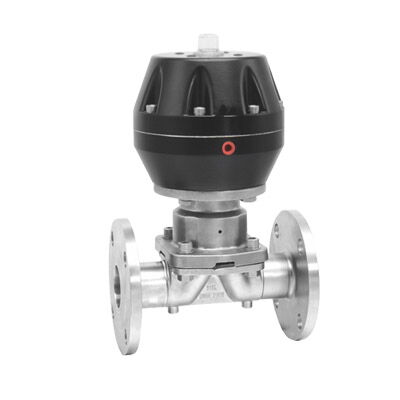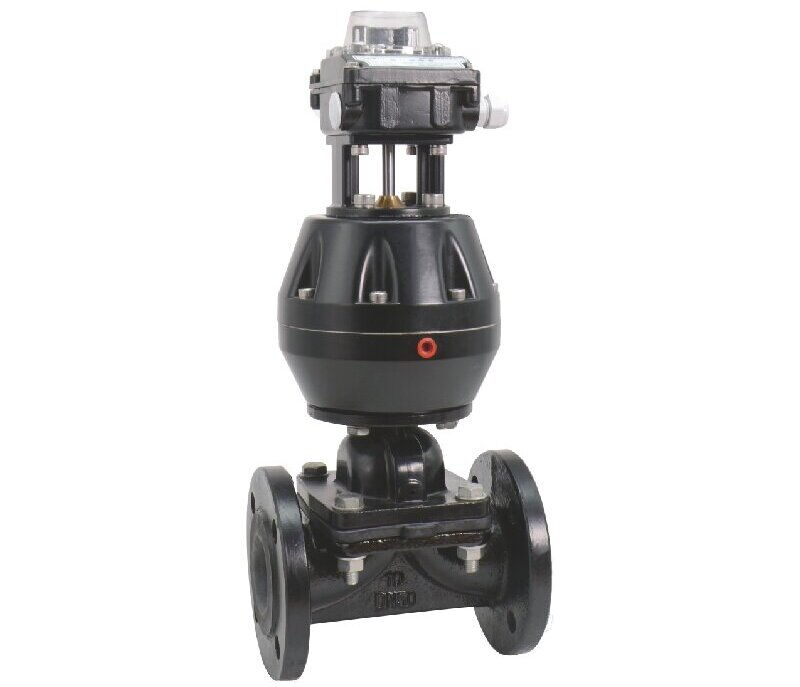
Diaphragm control valves are essential components in industrial flow control systems, offering precise regulation of liquids, gases, and slurries. Known for their reliability, durability, and cost-effectiveness, these valves are widely used across industries such as oil and gas, chemical processing, water treatment, and pharmaceuticals.
This article explores the key features, materials, control methods, and applications of diaphragm control valves, providing a detailed understanding of their functionality and benefits.
A diaphragm control valve operates using a flexible diaphragm that moves up and down to regulate fluid flow. The diaphragm acts as a barrier between the process fluid and the valve mechanism, preventing contamination and ensuring leak-free operation. These valves are particularly useful in handling corrosive, abrasive, or viscous media.

Precise Flow Control: Ensures accurate adjustment of flow rates.
Leak-Proof Design: The diaphragm isolates the fluid from internal components, reducing leakage risks.
Corrosion & Abrasion Resistance: Suitable for harsh chemicals and slurries.
Low Maintenance: Fewer moving parts reduce wear and tear.
Versatility: Available in various materials for different industrial needs.
Diaphragm control valves are categorized based on actuation methods and diaphragm materials.
Use compressed air to operate the diaphragm.
Ideal for automated processes requiring quick response times.
Commonly used in chemical and water treatment plants.
Operated via handwheel or lever.
Suitable for applications where automation is unnecessary.
Often used in low-pressure systems.
Use electric motors for precise control.
Preferred in remote or automated systems.
The choice of diaphragm material depends on the fluid’s chemical properties, temperature, and pressure.
Features: Excellent chemical resistance, low friction, and high flexibility.
Applications: Handling aggressive acids, solvents, and high-purity fluids.
Features: High elasticity, good abrasion resistance, and compatibility with oils.
Applications: Water systems, low-pressure oil handling, and general industrial use.
Features: High-temperature resistance (up to 150°C/300°F), strong oxidation resistance.
Applications: Sulfuric acid, hydrocarbons, and corrosive fluids.
Features: Superior chemical and UV resistance.
Applications: Semiconductor manufacturing, high-purity chemical processing.
Diaphragm valves can be operated using different control mechanisms depending on the application requirements.
The simplest and most cost-effective method.
Operators adjust the valve using a handwheel or lever.
Best suited for small-scale or low-frequency operations.
Uses compressed air to actuate the diaphragm.
Provides fast response and precise flow adjustments.
Commonly used in automated industrial processes.
Uses an electric actuator for remote or automated operation.
Ideal for systems requiring integration with PLCs (Programmable Logic Controllers).
Uses hydraulic pressure for heavy-duty applications.
Suitable for high-pressure oil and gas systems.
Due to their versatility, diaphragm control valves are used in numerous industries:
Used in refining, pipeline control, and chemical injection systems.
Resistant to corrosive hydrocarbons and high-pressure conditions.
Handles aggressive acids, alkalis, and solvents.
PTFE and PVDF diaphragms ensure chemical compatibility.
Controls the flow of clean water, sludge, and treatment chemicals.
Rubber diaphragms are commonly used due to their durability.
Ensures hygienic flow control with FDA-approved materials.
Prevents contamination in sterile environments.
Regulates cooling water, steam, and chemical dosing systems.
High-temperature diaphragms withstand extreme conditions.
When choosing a diaphragm control valve, consider the following factors:
Ensure the diaphragm material is resistant to the fluid’s chemical properties.
Select a valve that can handle the system’s maximum pressure and temperature.
Determine the required flow rate and adjustability.
Choose between manual, pneumatic, electric, or hydraulic based on automation needs.
Opt for valves with easy maintenance and long service life.
Diaphragm control valves are indispensable in modern industrial systems, offering precise flow control, durability, and resistance to harsh conditions. With various materials and actuation methods available, these valves can be customized for nearly any application.
Whether in oil and gas, chemical processing, or water treatment, selecting the right diaphragm control valve ensures optimal performance, efficiency, and cost savings. By understanding their features, control methods, and applications, industries can make informed decisions to enhance their flow control systems.